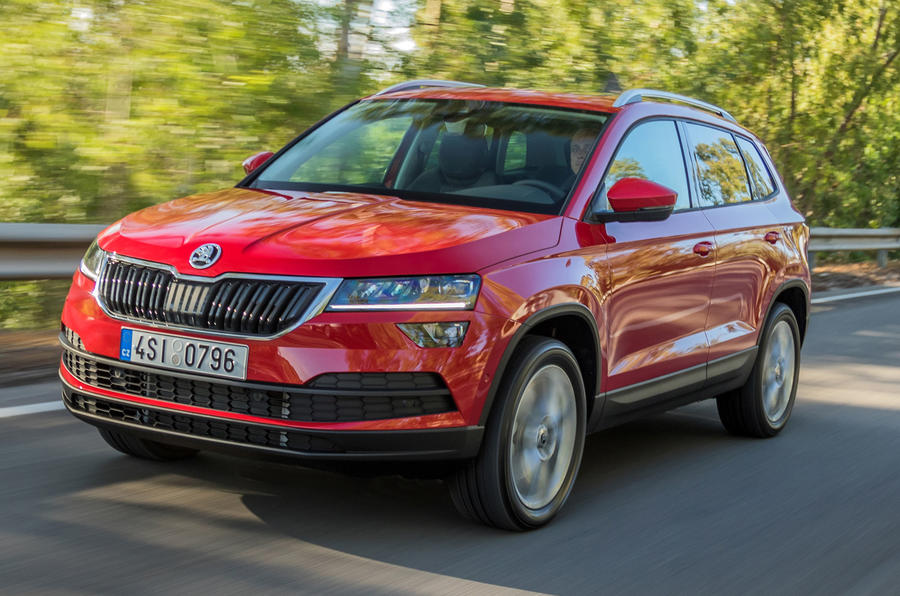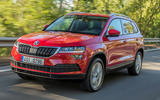What is it?
Although Skoda won’t admit it, the Karoq is the replacement for the much-loved Yeti. That was a likeable car of comfort, character and tidy handling, not to mention one of the first to latch onto the galactic moneymaking potential of the crossover segment – but it was undoubtedly flawed. Not as spacious as it needed to be and a touch too dear in the face of Nissan Qashqais and the like, after eight years of service the Yeti was ready for retirement.
Built on the Volkswagen Group’s MQB platform, the new Karoq is not an obvious successor. It’s much sleeker, for a start, exhibiting Skoda’s increasingly chiselled design language while at the same time smoothing out the two-box silhouette of Skoda its predecessor to resemble a scaled-down version of a full-size SUV. It’s also larger than the Yeti in every department and, with LED lights front and rear, looks smart, lean and modern - although not that endearing.
Four engines are offered at launch – two diesel and two petrol, ranging from 113bhp to 148bhp – and, depending on which you choose, the Karoq can be had with all-wheel drive and a double-clutch transmission instead of the standard six-speed manual. A range-topping 2.0-litre TDI with a warm-hatch-baiting 187bhp is due at some point next year.
Inside the austere but comfortable cabin (which features front seats that can be set usefully high or low, as well as plenty of innovative storage) is a version of the digital instrument panel pioneered by Audi’s Virtual Cockpit and a choice of two glass-faced central touchscreen systems for the infotainment: the 8.0in Amundsen and the sprawling 9.2in Columbus. Skoda’s optional VarioFlex rear seats, meanwhile, can be individually removed, allowing owners to tailor the trade-off between passenger count and luggage capacity.

































Join the debate
Add your comment
"The Karoq isn’t as fun to
I thought they were the same size?
Oh look - A Seat Ateca with a
Oh look - A Seat Ateca with a less attractive nose..zzzzzzzzz
I had a Yeti for 3 years - which was great because it was a bit different and distinctive. This is just dull.
If you want something like this - the Vauxhall Grandland is better looking, a Hyundai Tucson or Kia Sportage are also more distinctive and probably more reliable than anything from VAG as well.
Competition?
According to Autocar, the rivals for this car, and the 2wd petrol version previously reviewed, are all VW group products.